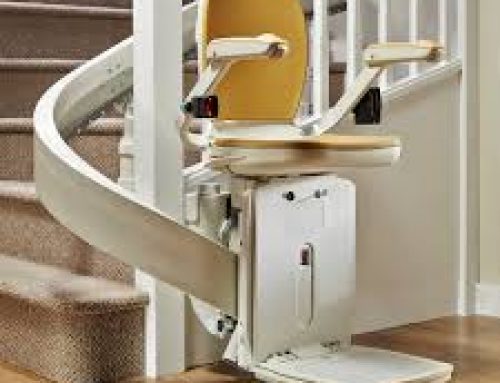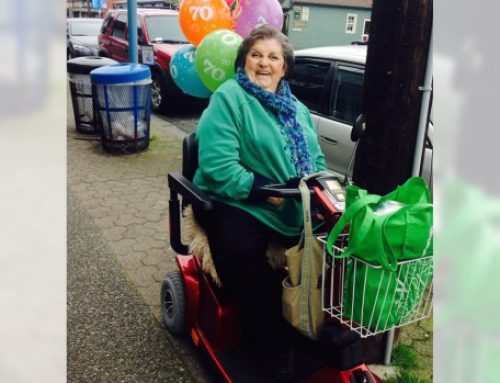Every morning, like many New Yorkers, Chris Pangilinan checks his phone to see if there will be interruptions to his subway commute. There is a mixed bag of possibilities commuters have come to dread: track work, track fires, signal problems, injuries, overcrowded trains, or just unexplained delays.
But Pangilinan’s main concern doesn’t make that list. As he is getting ready to leave for work, he’s thinking about elevators.
As a wheelchair user, elevator accessibility on the subway determines Pangilinan’s movement throughout the city every single day. Pangilinan works near a subway station with an elevator, Bowling Green, and lives near elevator stations at Jay Street-MetroTech and Borough Hall, in Brooklyn. But about once a month, he faces another challenge: One of the elevators between those three stations doesn’t work.
“I’ll arrive to a station and realize the elevator broke while I was on the train, or it just wasn’t reported [on the MTA website],” Pangilinan explains. “I stare at the elevator like an idiot for a couple minutes. I realize it’s broken. I go to the stairs, wait for another train to arrive, and hopefully I can make eye contact with someone who looks strong enough to carry my wheelchair while I walk up. When I get to the top, I get back into my chair, and then hope the next elevator is working.”
“It takes a ton of energy,” he continues. “My job needs to be near an elevator, or hopefully two, and I have to live near two elevators.”
This is a major challenge, considering roughly 80 percent of the city’s subway stations —355 out of 472 stops—are inaccessible to him, as well as the estimated hundreds of thousands of New Yorkers who use wheelchairs or have other mobility impairments.
In April, the nonprofit Disability Rights Advocates filed two class-action lawsuits against the Metropolitan Transportation Authority, one of which alleges that New Yorkers with mobility impairments are “blatantly denied” access to a high number of subway stations. The other claims the MTA does an “abysmal” job in its management of existing elevators. (MTA spokesperson Kevin Ortiz told Curbed the agency cannot comment on pending litigation.)
The MTA, the lawsuits note, is “the most inaccessible major transportation system in the nation.” But how did it get to this point?
There are a mess of factors that have created such a dire state of affairs for New Yorkers with mobility issues. Age, of course, is one; many of the subway system’s stations are more than a century old, and were built well before the Americans with Disabilities Act, which prohibits discrimination against individuals with disabilities in all areas of public life, was passed in 1990. (Elevators also were not commonplace in station design in the subway’s early years.)
The early 20th century was also a time when the needs of people with disabilities were not widely considered, or indeed, were even hidden from public life—think President Franklin D. Roosevelt’s efforts to keep his wheelchair hidden. It wasn’t until after the World War I and World War II, with many returning veterans with disabilities, that public sentiment began to change. By that point, though, the NYC subway was already on the decline. Decades of deferred maintenance and budget crises haven’t helped, either.
Then there’s simply a lack of political will, and lack of prioritization from the agency itself, at a time when both politicians and the MTA have been under fire for an overall decline in service. Pangilinan, who previously worked with the MTA on issues of subway accessibility, says that the agency lacks “the structure, resources, or accountability within the bureaucracy to make good change happen.” (He’s now the program director at TransitCenter, a New York-based transit advocacy group, as well as a plaintiff in the suit against the MTA.)
“The issue of accessibility often gets lost [in discussions of subway maintenance],” says Michelle Caiola, director of litigation at the Disability Rights Advocates. “Unless you’re affected, or someone close to you is affected by some kind of mobility disability, you don’t think about it as much.”
Indeed, able-bodied New Yorkers may have a different attitude when it comes to subway elevators: avoid them at all costs. They’re often slow, dirty, and can feel rickety and unsafe.
And all signs point to the MTA letting the service fall into decline. A recent audit by the New York City comptroller’s office surveyed 65 elevators and escalators over an 18-month period, and found that the MTA did not perform all scheduled preventive maintenance on nearly 80 percent of the sampled escalators and elevators. Additionally, one third of the MTA’s scheduled preventive maintenance assignments in the sample were completed late, if at all. And on top of that, the MTA does not systematically track whether and how quickly all of the defects found in its elevators and escalators are corrected.
The MTA has also struggled to adapt its existing infrastructure so that it complies with the ADA. Making stations accessible is no easy feat; it requires more than a year of work to obtain sidewalk space, reroute utilities, and reconstruct station components. At some stations, it can be nearly physically impossible due to a lack of space on platforms to install an ADA-compliant elevator, which can cost the MTA upwards of $10 million.
The agency is currently working on satisfying a 1994 agreement with disability advocates that gave the MTA until 2020 to identify busy, “key” stations (such as 34th St–Herald Sq, 125 St, and 14 St–Union Sq) and retrofit them for ADA compliance. Though the agency is on track to retrofit 100 stations by the deadline, disability rights activists say that at this rate, the system will not reach 100 percent accessibility until roughly the year 2100. Beyond those 100 stations, the MTA invested in an additional 31 “non-key” stations to install elevators, and plans to invest in another 11 non-key stations in the next few years.
The MTA’s efforts at compliance have also led to missteps. As pressure to accommodate passengers with disabilities increased, the agency invested in making the bus system more accessible, and also offered paratransit services like Access-a-Ride, which provides door-to-door service to disabled New Yorkers.
But “it turns out that was a horrendously bad decision,” Howard Roberts, a former top official at the MTA told the Wall Street Journal in 2016. “It probably has turned out to be … a hundred times more expensive to go with buses and paratransit than it would have been to bite the bullet and simply rehabilitate the stations and put elevators in.”
Jaqi Cohen, a coordinator with the Straphangers Campaign, says that buses and paratransit do not compare to the subway in terms of frequency of service, or its relative speed in bringing passengers across the five boroughs.
“I hear from [Access-a-Ride] riders who have been stuck in a car for three or four hours waiting to get to their destination, getting picked up late, and carpools that can take up to six hours,” she explains. Access-a-Ride, operated by private carriers in contract with the city, also requires a reservation made 24 hours in advance. Bus service, while more flexible and completely accessible, “is notoriously slow and unreliable,” Cohen says.
While MTA touts buses and Access-a-Ride as the alternative to inaccessible subway systems, “it’s a separate but equal kind of argument,” according to Mel Plaut, a program analyst with TransitCenter.
This summer, TransitCenter released Access Denied, a report outlining both short- and long-term accessibility solutions for New York’s subway system. The report challenges the MTA’s notion that old age stands in the way of retrofitting—both the Boston T and Chicago CTA, both century-old transit systems, have concrete plans to reach 100 percent accessibility. (It’s worth mentioning that neither system is as large as New York’s, nor does either one run 24/7 like the MTA.)
“These plans and improvements were only possible because elected leaders and senior agency management took a firm position to make accessibility a priority and hold their agencies accountable,” the report states. Boston’s plan, put in place after a lawsuit, does not outline a specific time frame for completion, while Chicago’s plan is due to be implemented over 20 years.
Ortiz, the MTA spokesperson, told Curbed that “currently 117 stations in the transit system are accessible, serving more than 44 percent of subway ridership, and we will continue to make more stations accessible.” Additionally, the 2015-19 capital budget now allocates $740 million for ADA accessibility and $334 million to replace existing elevators and escalators. That funding is enough to make an additional 19 stations accessible, according to Ortiz.
But transit advocates don’t believe that MTA leadership or local politicians have taken a firm enough position on accessibility, and lack both a concrete plan and an allocated budget to make the system fully accessible.
“If senior leadership and the governor prioritized this, it would be part of the culture,” says Plaut. “The political will comes first and everything else follows.”
There are also the “maddening” examples, as Plaut calls it, of subway stations that have been refurbished in recent years, and yet somehow completely miss the mark. There’s a $4 million ramp at the Mets–Willets Point stadium—added during a 2009 refurbishment—that’s only open during sporting events.
Perhaps most head-scratching is the $32 million station rehab of the highest subway station in the world at Brooklyn’s Smith–9th Street. The platforms are located nearly 88 feet above street level, and yet when the station was rehabbed in 2013, it was outfitted with some ADA-required components—handrails, stair risers, etc.—but not elevators that could take passengers in wheelchairs, those with impairments, or with strollers to the platform. The MTA again blamed costs, as well as structural concerns, for the lack of access.
Brand-new stations like the Second Avenue Subway and Hudson Yards offer more opportunity to get it right, and are fully designed to meet ADA requirements. But it isn’t always easy—remember the drama and holdups of the inclined elevators at the 34th Street 7 stop?
“We live in an elevator city,” says Plaut. “It’s something all other building owners have figured out to do. Why can’t the MTA follow the lead on that?”
Perhaps most maddening is how much the conversation persists, nearly 30 years after the passage of the ADA. “A lot of advocates have become exhausted fighting for this,” Plaut notes. “But we’re at a critical moment where the MTA is already thinking about significant changes. It would be a big missed opportunity for the MTA to fix subway operations and not address the accessibility issue, and rather kick it down the road for the next generation to deal with.”






Leave a Reply